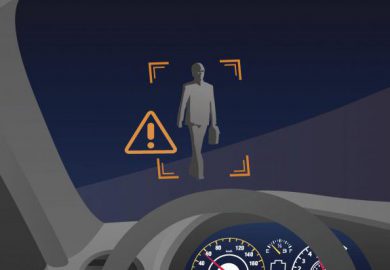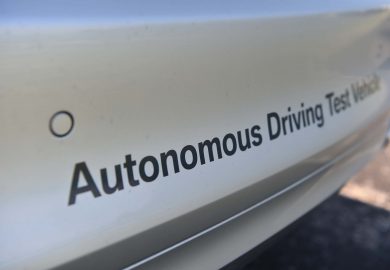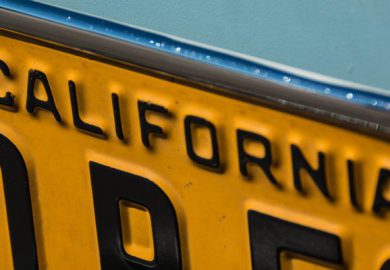General Motors, usually called GM, is an American automobile developer and manufacturer that is also a multinational company. Headquartered in Detroit, Michigan, General Motors is known for its many brands of vehicles. As of 2018, the company produces cars, sport utility vehicles, and pickup trucks under the brand names of Buick, Cadillac, Chevrolet, GMC, Holden, and Wuling. In the past, it produced vehicles under the brand names of Daewoo, McLaughlin, Oakland, Oldsmobile, Pontiac, Hummer, Saab, and Saturn. Founded by William Durant in 1908, General Motors continues to be a mainstay of American automotive innovation. In order to stay relevant and competitive, General Motors is working on a variety of projects that are related to autonomous cars.
LIDAR Development
One of the most important components of SAE Level 5 and SAE Level 6 self-driving cars is LIDAR. LIDAR is a portmanteau that refers to light and radar. It is a system that uses lasers to measure the distance to an object, while radar uses radio frequency waves to measure the distance to an object. When it comes to LIDAR, General Motors has a partnership with Strobe, which is a solid-state LIDAR developer and manufacturer. Strobe uses a chip style of LIDAR.
Strobe also claims that their chip-enabled LIDAR is resistant to interference from intense sunlight, which is a problem for the camera-based systems that are in use in other types of autonomous cars. Strobe also explains that its chip-enabled radar has an easier time detecting a pedestrian wearing black against the black asphalt surface of a road, which would help in self-driving car software pedestrian identification systems.
LIDAR and Radar Pairing for Enhanced Safety of Self-Driving Cars
General Motors intends to pair the LIDAR with radar for safety redundancy in autonomous cars. One of the biggest hurdles to federal approval is the safety issue in SAE Level 5 and SAE Level 6 self-driving cars, so the redundant systems could prove to be a boon for General Motors. Strobe’s LIDAR is frequency-modulated, which is unique among all of the companies working on autonomous cars.
In addition to their increased accuracy and decreased interference, the frequency-modulated chips also measure the distance and velocity of nearby objects. The software can compare it against what the radar is measuring. Self-driving cars will need to be outfitted with many of the LIDAR chips, but they are small. They have a footprint about the size of a quarter. This makes the idea of installing many LIDAR devices onto a car less cumbersome and more feasible. The small size of the devices would not seem to dramatically impact the exterior styling or design of the autonomous cars.
Partnership With Cruise Automation
In 2016, General Motors bought the software firm Cruise Automation. The firm was founded by former employees of Google with a lot of software and engineering experience, especially where it relates to artificial intelligence. Cruise Automation is one of just a handful of companies that has permits from the state of California to test-drive autonomous cars on public roads.
This gives General Motors a considerable heads up on the competition for developing commercially available SAE Level 5 and SAE Level 6 vehicles. One of the biggest challenges with the artificial intelligence software, cameras, and sensors is seeing lane markings on obscured roads, such as those that are covered with snow. Cruise Automation is working on that problem with the other General Motors engineers.
Commercializing the Technology
The LIDAR chip made by Strobe for General Motors is supposed to reduce the cost of installing LIDAR onto autonomous cars by as much as 99 percent. Strobe also claims that its chips are accurate to a distance of 300 meters, have a processing time of 45 milliseconds, and cost less than $100 to make. Since LIDAR could be one of the costliest components of self-driving cars, lowering the cost of this technology could make autonomous cars more accessible to small businesses and make them more cost-effective for urban taxi systems and courier services. The GM engineers will work with Strobe’s founders, Julie Schoenfeld and Dr. Lute Maleki, to make the chip-enabled LIDAR available on a mass-production scale for use in General Motors’ proposed fleet of self-driving cars.
Testing the Chevrolet Bolt
In late 2016, General Motors received permission from the state of Michigan to start testing its self-driving car, the Chevrolet Bolt. The Chevrolet Bolt is an all-electric car. It is produced in Orion, Michigan, which is where General Motors also plans to build its fleet of self-driving vehicles.
The Chevrolet Bolt has the LIDAR, radar, cameras, sensors, and artificial intelligence software. General Motors had already tested its Chevrolet Bolt on private pathways at its technological development center, so permission to test it on public roads was the next natural step in the development process. The state of Michigan approved four laws allowing for the testing of SAE Level 5 and Level 6 cars.























